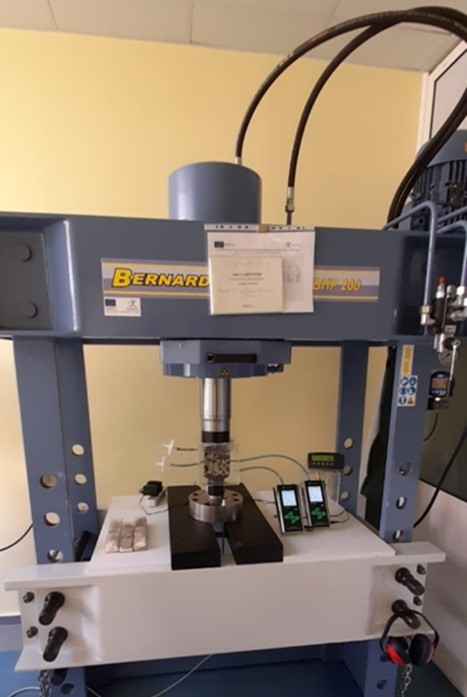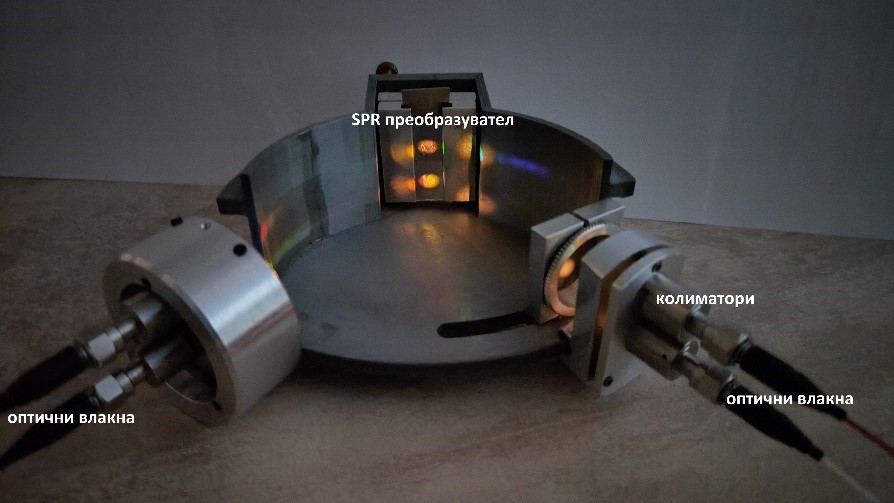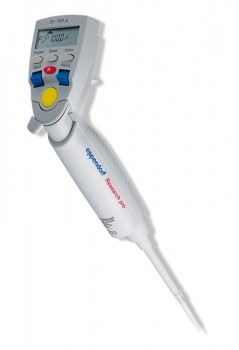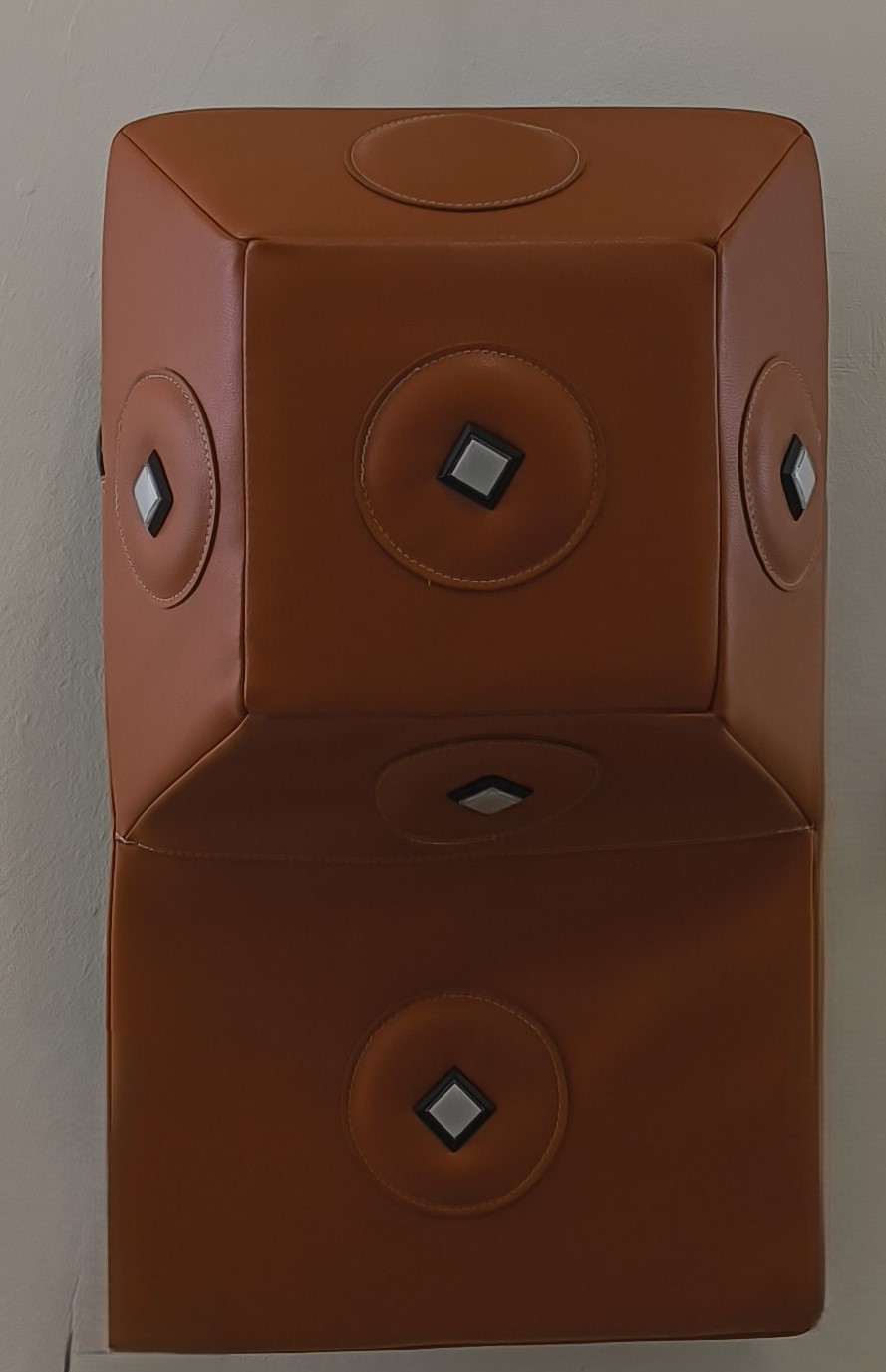
Sensors
Emission and Sensor Registration of Microparticles in Inhomogeneous Structures under Uniaxial Deformations
The Institute of Robotics – BAS presents research that focuses on clarifying the root causes and mechanisms that lead to the generation of fractures during deformations. By analyzing these complex mechanisms, the experiments aim to improve methods for predicting and managing the risks of pre-destructive and destructive processes in critical infrastructure.
The research contains several innovative aspects that contribute to the understanding and analysis of processes related to the destruction of rock structures under uniaxial compression in the context of a new phenomenon:
• Experimental determination of the mechanism of mineral particle emission from the surface of structures in the typical range of 0.3 µm – 5.0 µm for the phenomenon.
• A drastic increase in particle emissions as deformation increases to the level preceding the destruction of the samples.
• Quantitative assessments of particle emissions depending on effective compressive stresses and relative load levels for different types of geomaterials.
• The results on emission patterns enhance the ability to model and analyze deformation processes in rock systems.
The applied aspect of the phenomenon is multifaceted. Based on it, innovative robotic platforms, sensor devices, and next-generation technologies can be developed. Thus, continuous particle monitoring serves for early warning and prediction of pre-emergency and emergency events in critical infrastructure.

Sensors
Biosensor technology for detection of pathogens/gases/pesticides
Institute of Optical Materials and Technologies “Acad. Jordan Malinowski” presents biosensor technology for detecting pathogens/gases/pesticides.
A method based on laser ablation has been technologically mastered to immobilize the recognition substance on the optical transducer. The method, called MAPLE, provides direct immobilization (without the presence of an embedding matrix of intermediary molecules) of the recognition molecules. The method has been tested for immobilization of haemoglobin, myoglobin, antibodies and antigens. Precise control of the thickness of the molecular layers while preserving their bioactivity has been achieved. The absence of an embedding matrix ensures the maximum possible specificity inherent only to the recognition molecules. This solves the specificity problem.
Control of the MAPLE process parameters allow the creation of a nanostructured layer of the required thickness. This process largely determines the detection sensitivity. Proof of the effectiveness of the process is the reached sensitivity of 120 fM in the detection of SARS CoV-2 proteins.
The element that converts changes in the bioactive layer caused by bimolecular reactions into an optical signal is a metallized diffraction grating. The approach of using a metallized diffraction grating disproves the widely held belief that this detection method has a sensitivity about an order of magnitude less than that of prism detection.
The use of suitable diffraction gratings solves the problem of sensitivity and the difficulty of handling them with a sample under investigation.
The technology of immobilization of recognition molecules, as well as the technology of manufacturing diffraction gratings, have been fully mastered.
A prototype of the biosensor was created, including all optical and detection elements, representing a small, compact device. Functionality is proven in a simulated environment. The measuring equipment is laboratory instruments.

Sensors
Sensor pipette
The Institute of Information and Communication Technologies at BAS presents a device—a sensor pipette. This device utilizes fluorescence and/or spectroscopy to measure diffusion, concentration, and other parameters of dyes, nanoparticles, viruses, and more. It monitors the efficiency of nanoparticle synthesis, filtration, dialysis, and measures the properties and interactions of/among molecules, nanoparticles, viruses, and others.
The sensor pipette ultra allows rapid diagnostics – identification of viruses and diseases, pollutants, composition and content of an unknown sample in a solution. The main users of the solution are (sectors/branches of the economy): Academic, biological and medical laboratories, institutes, institutions; quality control and diagnostics laboratories; bio-technological companies, pharmaceutical companies, agriculture, research units.
The main advantages are that it miniaturizes extremely complex and expensive apparatus (to the size of the hand), affordability (accessible to many more users, laboratories, etc.), makes the technology accessible to business people (no training required to is used), speed of obtaining the result (1-10 seconds).

Sensors
Innovative Trainer with Broad Application for Developing Cognitive Abilities in Children, Adults, and Athletes
The innovative boxing trainer is a technology developed by scientists from the Institute of Neurobiology at the Bulgarian Academy of Sciences (BAS). It consists of a leather cushion with integrated software and colored buttons, designed to develop and enhance cognitive abilities in children, adults, and athletes. Benefits of the Trainer for Improving Cognitive Abilities:
- Trains the brain for more flexible and faster thinking;
- Allows for multi-component decision-making – exercises coordination between the left and right hemispheres depending on the task;
- Improves decision-making time;
- Offers the possibility to create various training combinations;
- Enhances the ability to react to external stimuli.
The trainer has integrated software that allows for the collection and comparison of training statistics. This innovative boxing cushion can be controlled via a mobile phone. It is suitable for individual physical activity at home or in the office, as well as for use in fitness and rehabilitation centers. Its use supports the improvement of thinking, concentration, and coordination. The experimental model of the interactive boxing trainer is aimed at several target groups with broad application:
- School-age children – for improving concentration and cognitive abilities. It is suitable for children with hyperactivity and attention deficit.
- Adults – to develop more flexible and faster thinking and improve decision-making ability. It is suitable for preventing cognitive disorders and for women in menopause.
- Athletes – for individual training to improve both visual-motor reaction and decision-making time. It is suitable for training, enhancing, and controlling the specialized technical preparation of boxers and improving sports and technical skills.

Sensors
Multi-sensor system for real-time air quality measurement
A multi-sensor system that provides comprehensive real-time air quality information by simultaneously measuring various pollutants and environmental factors has been developed at the Institute of Information and Communication Technologies. The system is built with affordable sensors and open-source tools, making it a practical solution for widespread deployment in various agricultural settings and resource-limited regions.

Sensors
Monitoring system for forecasting solar photovoltaic energy production
A monitoring system for measuring solar radiation has been developed at the Central Laboratory for Solar Energy and New Energy Sources, the data from which play an important role in designing and forecasting solar photovoltaic power plants, as well as in protecting against disturbances in the power transmission network. The monitoring system consists of digital I2C sensors measuring incident direct and diffuse solar radiation in different optical ranges with real-time visualization using the open source graphical application Grafana OSS. The developed prototypes are used to compare solar activity and detect spectral fluctuations and features at different geographical points and altitudes.

Sensors
Electrospray deposition of ZnO thin films for application in QCM ammonia sensors
A method for electrospray deposition of ZnO thin films for their application in functionalizing QCM ammonia sensors under optimal conditions has been developed at the Institute of Optical Materials and Technologies. The most sensitive films are obtained at a substrate temperature of 150 °C, an emitter voltage of 18 kV and a precursor feed rate of 10 μL/min. Taking into account the chemical and mechanical stability of the electrosprayed films, as well as their low cost, the results obtained open up new possibilities for the application of electrosprayed ZnO films as gas and biosensors.

Sensors
Biosensor for detection of H. pylori bacteria in saliva
A study conducted at the Institute of Optical Materials and Technologies demonstrates the applicability of a surface plasmon resonance (SPR) biosensor based on the binding of the Lewis blood group antigen b (Leb) to the specific adhesin BabA of the H. pylori bacteria for its detection in saliva. The method for detecting H. pylori in saliva offers good prospects, offering both clinical application and as a rapid point-of-care test. Infection with the bacterium Helicobacter pylori (H. pylori) affects about half of the world’s population, therefore timely and reliable diagnosis of the disease is necessary.

Sensors
Underwater Monitoring System for Marine Noise
A team from the Institute of Metallurgy, Equipment and Technologies with the Center for Hydro- and Aerodynamics has developed a model of a “Bottom-positioned underwater monitoring system with audio recording of marine noises other than natural sea noise, with rapid notification of a detected sound anomaly”. The station is applicable for underwater monitoring to control the levels of anthropogenic noise in marine spaces with capabilities for adaptive positioning by depth, continuity of the process of measuring the hydrophysical characteristics of seawater and detection, registration and storage of marine noises representing a sound anomaly, against the background of natural sea noise, rapid transmission of data on the detected sound anomaly and periodic transmission of the hydrophysical characteristics via a floating radio buoy. The station ensures technological and financial efficiency, safety of operation in the marine environment, overcoming the impact of fouling, algae, various sediments, maintainability, reliable wireless implementation of the connection between the bottom station and the radio buoy, and easy deployment and retrieval of the device with the ship’s regular lifting equipment.

Sensors
Magnetic field and current measurement using a sensor for broad-spectrum fluorescence of optically active crystals
A method for measuring magnetic fields and currents, including a sensor for broad-spectrum fluorescence of optically active crystals Bi12SiO20 (BSO), the operation of which is analyzed by the Muller–Stokes method, was developed by a team of the Laboratory of Applied Physics. The results are traced using the schemes for the spectral shift of the minima of the modulated polarimetric spectral response and π-dephased differential amplitude response. The sensitivity to current, temperature, cross-sensitivity have been experimentally measured and their spectral dependencies have been established, which can find application in industry, energy, medicine and other fields.

Sensors
Artificial Passive Tri-Wall Reflector of the SAR Signal
Development, carried out at the Institute for Space Research and Technology, of an artificial passive tri-wall reflector (TR) of the SAR signal (SAR signal) simplifies the design, ensures reliable production and implementation in combination with durability to external influences. It is attached to a point on the earth’s surface with known movements, called the measurement point (TP), which must retain its property of strong reflection of the SAR signal for a long period of time, ensuring a high signal-to-noise ratio compared to surrounding objects. Small deformations of the earth’s surface are measured and evaluated according to the phase component of the radar signal, as such points are difficult to find, especially when long-term measurements are required in areas where there are already long-term records of ground surface movements (earthquakes, tectonic displacements, landslides) or where there are objects of critical infrastructure (dams, bridges, open-pit mining).
